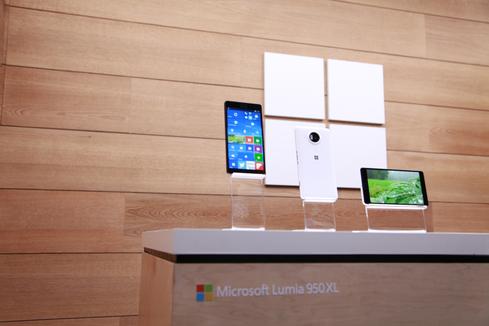Microsoft's Project Oxford Gets Emotional With Machine Learning, AI
Microsoft announces new services in its Project Oxford suite of developer tools based on machine learning and artificial intelligence.

7 Microsoft Improvements We Need To See
7 Microsoft Improvements We Need To See (Click image for larger view and slideshow.)
Microsoft has unveiled plans to release new tools in its Project Oxford that will help developers take advantage of latest advances in machine learning and artificial intelligence, including a tool that can recognize emotion. The company made the announcement Wednesday at the Future Decoded conference in London.
Project Oxford, a suite of developer tools based on Microsoft's machine learning and artificial intelligence research, was introduced in May at the Build conference. It uses a Web-based RESTful interface to add voice, text, and image services. Project Oxford face, speech, and computer-vision APIs have also been included as part of the Cortana Analytics Suite.
The emotion tool released Wednesday "can be used to create systems that recognize eight core emotional states -- anger, contempt, fear, disgust, happiness, neutral, sadness or surprise -- based on universal facial expressions that reflect those feelings," according to a Microsoft blog post about the announcement.
{Image 1}
However, not all emotions are detected with the same level of confidence, according to reports. Because the tool can only handle static images at the moment, emotions such as happiness can be detected with a higher level of confidence than other emotions such as contempt or disgust.
The emotion tool is now available to developers as a public beta. Other new tools announced Wednesday will be released as beta versions by the end of the year. They include video, Custom Recognition Intelligent Services, speaker recognition, and updates to face-detection APIs.
The video tool, which is based on some of the same technology found in Microsoft's Hyperlapse, helps analyze and edit videos by tracking faces, detecting motion, and stabilizing shaky video.
Custom Recognition Intelligent Services (CRIS) can tailor voice recognition for a specific situation, such as a noisy venue. The tool can also be used to help an app better understand people who have traditionally had trouble with voice recognition, such as non-native speakers or those with disabilities. Microsoft said that it will be available as an invite-only beta by the end of the year.
The speaker recognition tool can used to discover who is speaking based on learning the particulars of an individual's voice. The tool might be useful for identification of a speaker in a conference call, for example. It will be available as a public beta by the end of the year.
Microsoft also announced updates to Project Oxford's face APIs to include facial hair and smile prediction tools, and an improved visual age estimation and gender identification.
Connecting speaker recognition and face detection may also serve as the foundation of an authentication system for users similar to what Google is doing with the still-under-development Project Abacus.
All of the real work goes on inside of Microsoft's Azure Cloud platform, and that seems to be the way Microsoft wants it. These kinds of features serve as a gateway to Azure for developers, and may grow into a competitive advantage against other commodity cloud providers.
About the Author(s)
You May Also Like
How to Amplify DevOps with DevSecOps
May 22, 2024Generative AI: Use Cases and Risks in 2024
May 29, 2024Smart Service Management
June 4, 2024








